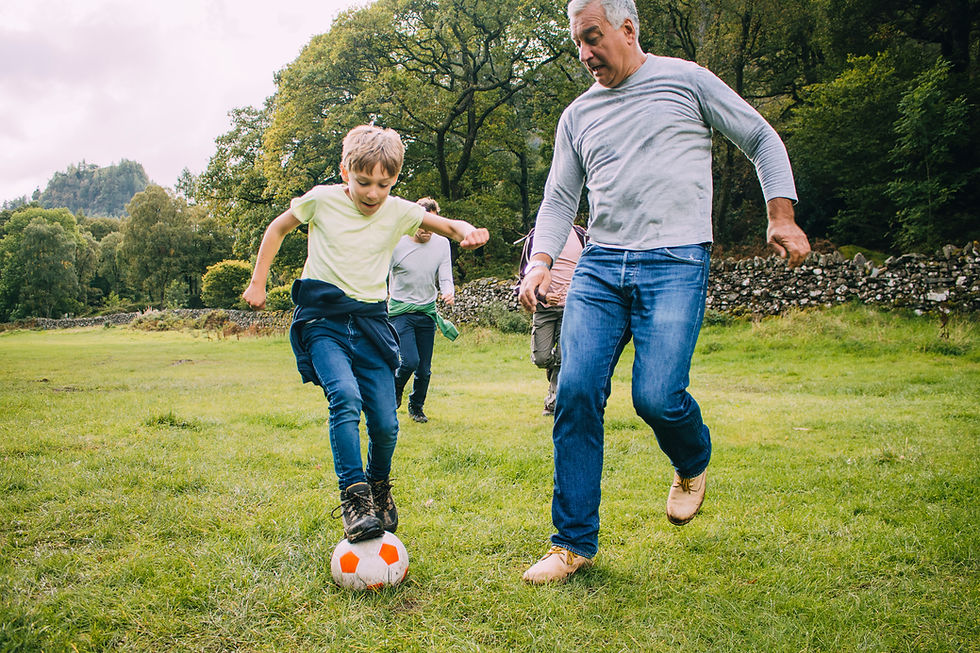Healthspan vs Lifespan: What's the Difference and Why it Matters
- melaniemovewell
- Oct 26
- 4 min read
The Habits That Keep You Strong, Sharp, and Active as You Age

As I come up on another birthday, I find myself thinking less about the number of candles on the cake and more about the quality of the years ahead.
If you’ve been following me for a while, you know this is my big soapbox: our focus shouldn’t just be on how long we live (lifespan), but on how well we live (healthspan).
And if there’s one thing that every expert in the field of longevity agrees on, it’s that getting fit and staying fit is the single most powerful thing you can do to improve your healthspan.
(If you missed my post on Chronological Age vs Biological Age, that’s a great place to start.)
What’s the Difference?
Lifespan is simply how long you live.
Healthspan is how many of those years you can live well without pain, fatigue, or disease holding you back.
I often ask people to reflect on how they want to spend the last 10 years of their life and to think in terms of quality of life. Think about it this way: living to 90 could be a struggle if you’re managing physical and cognitive decline. On the other hand, imagine feeling strong, sharp, and capable well into your 70s and 80s, that’s the real win.
Dr. Peter Attia coined this period the “Marginal Decade” in his book Outlive. For most people, unfortunately, this is a period of poor life quality where physical health has declined significantly, and cognitive health often follows.
I once heard an expert say, “It’s better to be the oldest person in the gym than the youngest in the nursing home.”
The Six Pillars of a Longer, Healthier Life
Leading experts in longevity, including those at Stanford and UCLA agree on six core lifestyle pillars that have the greatest impact on your healthspan.
1. Move Daily, Especially Strength Train
Nothing protects your joints, bones, and balance like muscle. Strength training preserves lean mass, prevents frailty, and supports overall vitality.
2. Healthful Nutrition
A whole-food, fibre-rich diet balanced with healthy proteins and fats supports recovery, maintains lean mass, and keeps blood sugar and inflammation in check. You can’t out-train poor nutrition, but good nutrition makes training far more effective.
3. Prioritize Restorative Sleep
Quality sleep acts as a biological reset. It improves immune function, mood, hormone regulation, and recovery, all of which are essential to long-term vitality.
4. Manage Stress
Chronic stress accelerates biological aging. Tools like movement, deep breathing, and time in nature reduce inflammation and protect your nervous system.
5. Build Social Connection
Strong relationships and a sense of community are linked to improved mental health and longevity.
6. Keep Your Brain Active
Cognitive engagement such as learning a new skill, reading, volunteering and hobbies help reinforce and make new connections in the brain brain and delay cognitive decline.
Why Fitness Tops the List
Every expert in longevity research agrees: exercise, and especially strength training, is the single most powerful tool we have for extending healthspan.
Movement keeps your joints stable, your heart strong, your metabolism efficient, and your brain sharp.
And here’s the often-overlooked part: mental and physical fitness go hand in hand. When you move better, you think clearer. When you manage stress well, your body performs better.
The Science of Living Better, Not Just Longer
Cardiologist and longevity researcher Dr. Eric Topol says it best: “If we could live well into our 90s and have no chronic diseases, the big three age-related ones, cancer, cardiovascular, and neurodegenerative, that would be the goal. So I think most everyone would agree that health span overrides lifespan or longevity.”
That’s exactly what fitness, strength, and movement give us, the ability to stay independent, capable, and mentally sharp well into our later decades.
We can’t control every factor in aging, but we have more influence than we think. Don’t think of this as chasing youth but rather about building capacity: the ability to move, think, and live fully for as long as possible.
If you’re in your 50s, 60s, or beyond, this is the perfect time to start. Because the earlier you invest in your fitness, both mental and physical, the bigger the payoff for your future healthspan.
Ready to take the next step? Start with my free 5-Day Joint-Loving Habits Mini Guide, it’s a simple, practical way to build the daily movement and recovery habits that protect your joints and support long-term strength and mobility.
References:
Attia, P., & Gifford, B. (2023). Outlive: The Science & Art of Longevity. Harmony.
Topol, E. J. (2025). Super agers: An evidence-based approach to longevity. Simon & Schuster.
Disclaimer:
This site offers health, fitness and nutritional information and is designed for educational purposes only. You should not rely on this information as a substitute for, nor does it replace, professional medical advice, diagnosis, or treatment. If you have any concerns or questions about your health, you should always consult with a physician or other health-care professional. Do not disregard, avoid or delay obtaining medical or health related advice from your health-care professional because of something you may have read on this site. The use of any information provided on this site is solely at your own risk.






Comments